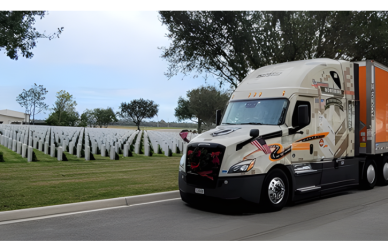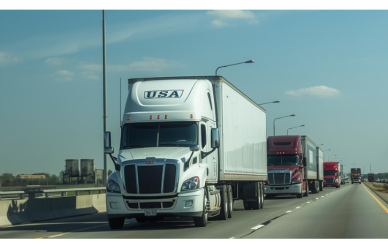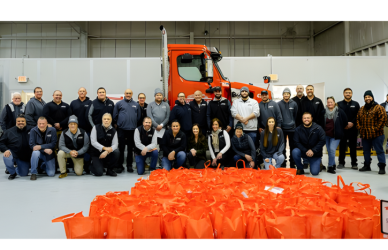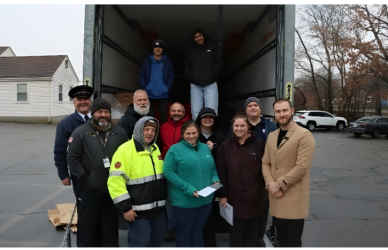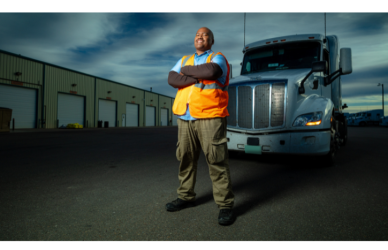Women make up half of the U.S. population, but despite this fact, only 8.4% of U.S. truck drivers are female. While this is a small percentage, it has been on the rise, as reported by Transport Topics.
Elisabeth Barna, executive vice president of industry affairs and senior adviser to the president and CEO of American Trucking Associations, was a part of the industry when only 2 to 3% of truck drivers were women. The industry has made sincere attempts to increase rates of gender diversity and show women that trucking can be a lifelong career of passion and success for them, just as it is for men.
“There’s been more awareness that there are opportunities for women in the industry,” Barna said. “…I think the industry itself is telling the story more and being able to attract more women.”
As Barna recognizes, trucking has historically attracted a higher number of male drivers in comparison to females. This is a pattern that Nicole Ward, founder of the African American Women in Trucking Association, is trying to break.
“Since the beginning of time, this has been male dominated. You think about transportation, you see a truck driver, and you think ‘man,’” Ward said.
Ward is not alone in wanting to shift the narrative on who can be a truck driver. Ellen Voie, founder, president, and CEO of Women in Trucking, agrees that to increase gender diversity in the trucking industry, perceptions must shift.
“The biggest challenge is getting women to picture themselves in the industry,” she said. “Women don’t typically look at a truck and say, ‘I can drive that.’”
Another misconception that must be dispelled is that women can’t support their families while driving on-the-road routes. Barna calls attention to the fact that there are routes that allow drivers to be home each night if they want to be. Trucking also provides its drivers, male and female, with financial independence and security, allowing drivers of either gender the ability to provide for their families.
Dee Sova, a driver employed with Prime Incorporated and a 2019 America’s Road Team captain, believes the industry is just as suited to women as it is to men. She feels as though confidence is imperative for female truck drivers.
“The key to success is believing in yourself, absolutely,” she said. “No matter what type of trucking position you take on, you have to have the mindset that you can do this every single day.”
And the industry is not only looking to increase gender diversity within the driver population, but also that of people in leadership positions. In November 2021, a Women of Trucking Advisory Board was created through the Promoting Women in Trucking Workforce Act. The board comprises 16 women who have held a variety of positions in the trucking industry, but who are all united by one goal: recruit and retain more female drivers.
Barna is a member of this board and is confident in its capabilities.
“I think it’s a great opportunity for FMCSA to actually sit down and have candid conversations with women in the industry, whether that is professional truck drivers or safety managers or presidents and CEOs — there are lots of skill sets on that board — and help them to learn what it is like to be a woman in the industry,” she said. “I think it’s a very positive move, and I think it will make a great impact.”
Creating conversation through woman-to-woman mentorship is an effective strategy to both show women their place in the industry and increase their confidence. This starts with showing young girls examples of female truck drivers. Voie worked on a team to create the Girl Scouts Transportation Patch.
“We have a truck driver doll and our new driver ambassador truck/tractor-trailer goes to Girl Scout events to talk about careers in transportation,” Voie said. “We also talk about jobs and do a lot of media interviews and ride-alongs.”
Mentorship programs exist for women already in the industry as well. Women in Trucking has a 10-month formal mentorship program, LeadHERTrucking, that pairs female truck drivers and gives them a safe space to ask questions. Women in Motion, created through American Trucking Associations, is another new initiative that advocates for female truck drivers.
“We have a national footprint, an army of policy experts, our legislative team, and our 50 state trucking associations that can advocate on the state level on behalf of women in the industry,” Barna said.
Having procedures in place for advocating for women could ease worries over safety, a huge concern for female truck drivers. Other considerations like increasing lighting and door locks serve to make women feel safer behind the wheel. This is something companies have realized.
“They’ve added extra lighting in all the truck stop areas,” Barna said. “Showers are locked. They’ve upped the game to make it safer for women to drive.”
Steps like these show that the industry recognizes the value women bring, and it is clear that companies are making a concerted effort to hire female drivers, Voie said.
“Over the years they have seen the value that women bring: They are safer, easier to train, risk averse in cabs of trucks and 25% less likely to be involved in a crash,” she said. “Now that they are seeing the data, they are actively recruiting women.”






